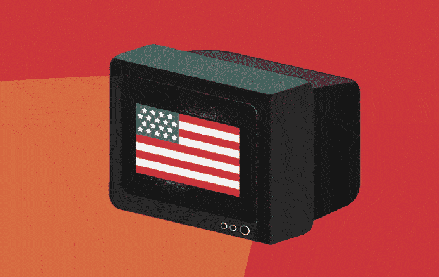Nexxen adds CTV tools to tap into political ad market growth

As ad tech companies compete for their share of record spending in political advertising, more CTV players are hoping new tools will help them win over candidates’ wallets up and down the 2024 ballot.
The latest updates come from Nexxen, an ad tech firm, which today is debuting new tools for political advertising that let campaigns geo-target voters by political districts and provide ways to optimize campaign end times within their flight schedule. The company — which provides digital video and CTV services for advertisers — also has two new audience partnerships, including one with Comscore and another with News Corp. Another added feature is a new political dashboard that offers real-time analysis of national and state-wide candidates as well as the ability to measure shifts in public sentiments and content engagement. (Nexxen was previously known a Tremor International until rebranding last year.)
The goal is to help campaigns craft ad strategies based on trends or to target people with ads depending on which candidates they support, according to Ariel Deitz, Nexxen’s vp of enterprise partnerships. She wouldn’t disclose Nexxen’s total revenue from political ads, but said it’s one of the “core pillars of the business” for 2024, with the political team comprising up to a fourth of the company’s enterprise sales team.
“Instead of spending millions of dollars on a particular issue that we believe to be important to a particular voter base, it helps to really inform the strategy on where [campaigns] should be focusing their attention,” Deitz said. “The discovery tool and political dashboard tool not only help understand sentiment, but also understand what consumption patterns look like.”
After U.S. President Joe Biden announced his withdrawal from the presidential race last weekend, Nexxen used its platform to analyze trends in the political/government genre from July 21 to July 22 to look at Hispanic/Latino demographic and the general population. Both groups showed a 1,000% increase in consuming content related to the term “Democratic Nominee.” Hispanic/Latino viewers were found to be engaged with the term combined with “reproductive policy” while the general population focused more on “election strategy.”
Nexxen is one of many ad-tech firms that have added new ways to ride the wave of how political campaigns are spending on connected TV and other digital media. Comscore, The Trade Desk, LG and Magnite have all debuted new tools and partnerships in the past year. Another is Cross Screen, which announced separate targeting and measurement deals with L2, Roku and LiveRamp. Others include Yahoo, Televisia and StackAdapt, which also integrated Samba TV’s real-time political audience segments earlier this year.
As recently as last month, eMarketer projected CTV political ad spend to reach $1.56 billion in 2024 and account for 12.6% of total U.S. political ad spend this cycle. That’s a fivefold increase in CTV revenue compared to 2020, when CTV accounted for just 2.7% of overall political ad spend. In a separate report from AdImpact and LG released this month, CTV ad spending on political ads could reach $1.34 billion, up 24% from the 2022 midterms. That’s higher than the $1.2 billion AdImpact expects this cycle for digital platforms like Google and Facebook.
In Biden’s absence, the prospect of U.S. Vice President Kamala Harris becoming the Democratic party’s nominee adds yet another layer of uncertainty to an already volatile political cycle. Experts say it’s too early to know how the recent shakeup could impact overall ad spending, but there’s a lot of ad money on the table already this election season. According to eMarketer, political ad spending could reach $12.3 billion this year, with 28.1% spent on digital platforms. The research firm also expects around 90% of digital ad spend directed toward programmatic formats.
The growth of CTV is both a continuation of the past cycles, said Paul Verna, an analyst and vp of content at eMarketer. It’s also the result of political campaigns and interest groups targeting millennial and Gen Z audiences that are much more active on CTV than linear TV.
“I expect Vice President Harris’ campaign (assuming she’s confirmed as the nominee) to spend heavily on CTV as she works to (re)introduce herself to young audiences and energize that part of the electorate,” Verna told Digiday via email. “Although the past month has brought a flurry of game-changing developments in both campaigns, we don’t expect to revise our forecasts as a result of these events.”
The stakes also are higher for political campaigns for for non-political brands. While a CPG marketer can make changes in the next financial quarter, candidates risk not just wasting money but also risk losing votes. According to Viant Chief Marketing Officer Jon Schulz, geo-bound ads are key for making sure Missouri-focused ads don’t show up in Michigan, but getting locations right is especially important for reaching undecided voters.
“If you don’t eat potato chips but you happen to get a potato chip ad, would it really make you that mad, or would you just ignore it?” Schulz said. “The consequences are a little bit greater [in politics]. It’s not just a wasted impression. It could be motivating somebody to go post on their social media and go, ‘Look what I got.'”
Beyond data-driven ads, content-based contextual targeting also is gaining traction as more companies use visual AI to identify content and create audiences segments with large language models. That could help target the right voters and avoid alienating them with attack ads or irrelevant issues.
One example is Iris.TV, which is helping candidates reach viewers on both subscription-based streaming and free ad-supported television (“FAST”) channels. While targeting can be tricky for some demographics like younger viewers, IRIS.TV CMO Rohan Castelino noted Black and hispanic viewers skew higher with free ad-supported content. One way campaigns are using contextual targeting is to reach single-issue voters, but matching the ads and content is especially key for CTV.
“You obviously want to match to make sure tone and sentiment is matched so you can at least know that probably the best place for [an attack ad] is not placed in happy content,” Castelino said. “Maybe it’s aligned for more somber and sober stuff. The last thing you want to do is reach the right household at the wrong moment. You kind of do a self-own if you show content that’s not jiving with the vibe.”
More in Media Buying

Ad Tech Briefing: Big Tech won 2025 (even when it lost)
How AI, commerce media and scale reshaped ad tech in 2025 to the benefit of Big Tech.

How brands shifted marketing and media strategies through year of tariffs
Marketers share how they navigated the maze of tariffs and regulatory changes this year.

Media Buying Briefing: Omnicom Media execs begin their pitch outreach ahead of an expected new-business glut
Omnicom’s acquisition of IPG is only a few weeks old, but its combined offer to the market will soon be put to the test as it meets with consultants.








